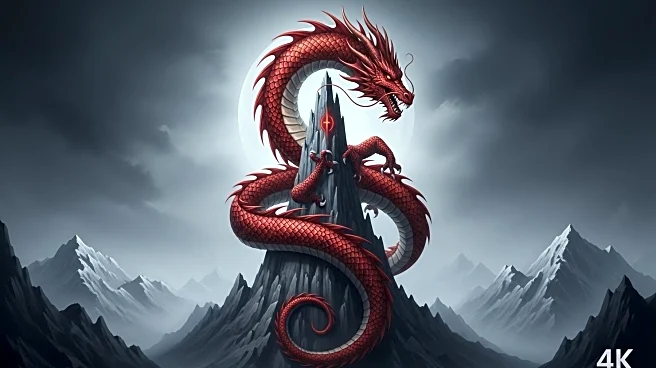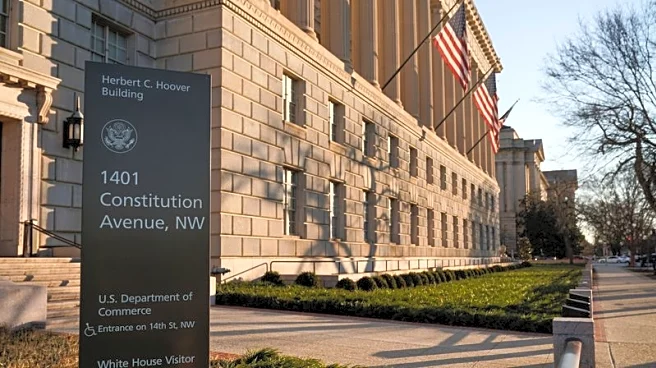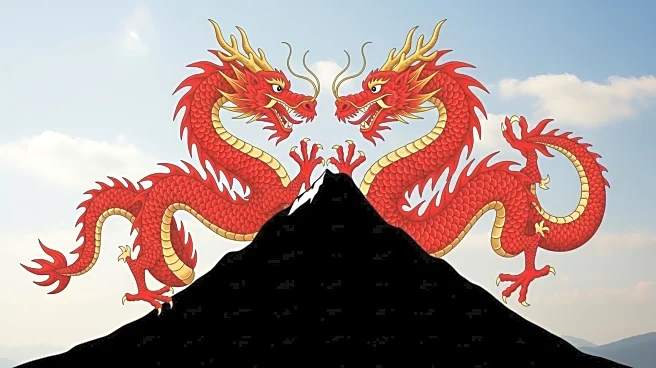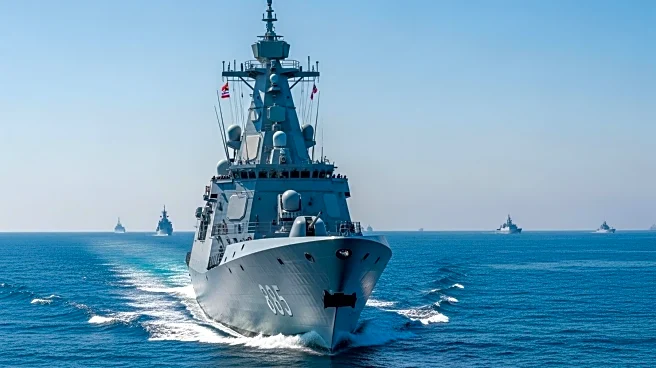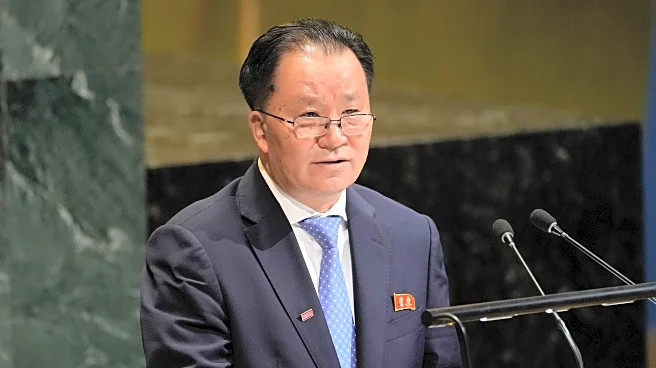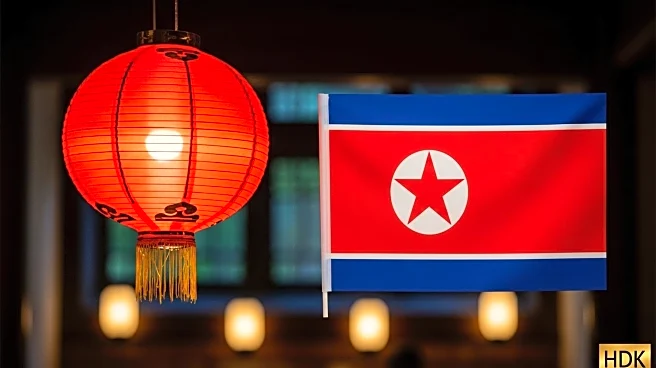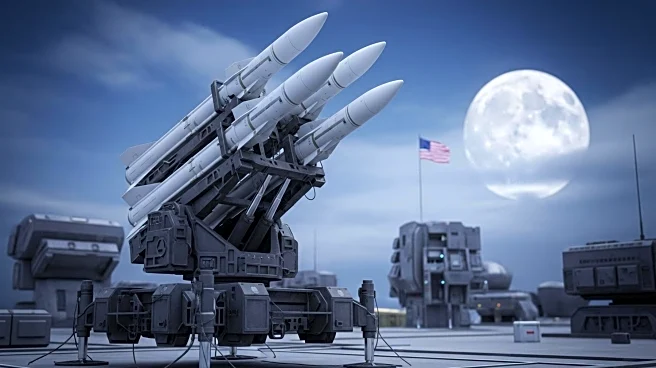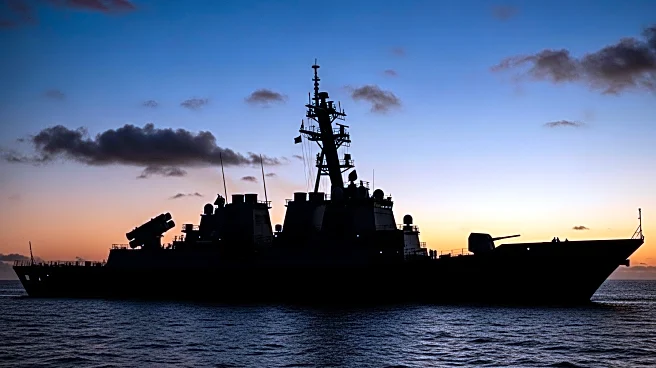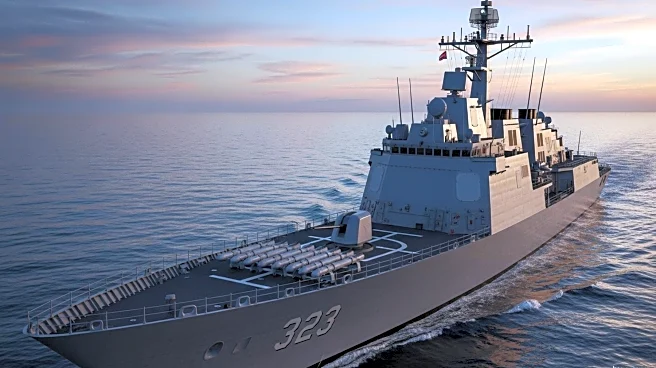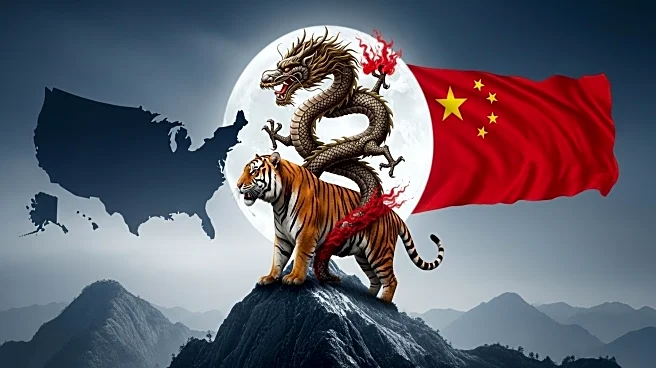What is the story about?
What's Happening?
Japan is enhancing its military capabilities by equipping the JS Chokai, a guided-missile destroyer, with Tomahawk cruise missiles from the United States. This move is part of a broader strategy to counter regional threats, particularly from China and North Korea. The JS Chokai is currently en route to the US for a year-long deployment, during which it will undergo modifications and crew training to enable the launch of these missiles, which have a range of approximately 1,000 miles. This development follows Japan's agreement in early 2024 to acquire 400 Tomahawks, reflecting Tokyo's commitment to increasing defense spending in response to what Defense Minister Gen Nakatani describes as the most severe security environment since World War II. The Japanese Defense Ministry's annual white paper identifies China's military activities as the greatest strategic challenge, citing Beijing's rapid enhancement of military capabilities and intensified regional activities.
Why It's Important?
The deployment of Tomahawk missiles on Japanese warships marks a significant shift in Japan's defense posture, traditionally constrained by its post-World War II pacifist constitution. This move could alter the strategic balance in the Pacific, as it enhances Japan's ability to conduct long-range precision strikes, potentially targeting areas deep within China or North Korea. The decision underscores the growing military collaboration between the US and its allies in the region, including Australia, which has also acquired Tomahawks. However, this development may exacerbate regional tensions, as China has criticized the move, arguing it disrupts peace and stability and undermines the international order. The enhancement of Japan's military capabilities could lead to an arms race in the Pacific, affecting geopolitical dynamics and potentially prompting further military build-ups by neighboring countries.
What's Next?
Japan plans to have the JS Chokai ready for actual missions by next summer, following live-fire testing. The deployment of Tomahawks is likely to prompt reactions from regional powers, particularly China, which may respond by further enhancing its own military capabilities. The situation could lead to increased diplomatic tensions and necessitate discussions on arms control and regional security frameworks. Additionally, the US and its allies may continue to strengthen their military cooperation to counter perceived threats, potentially leading to more joint exercises and strategic deployments in the Pacific.
AI Generated Content
Do you find this article useful?


